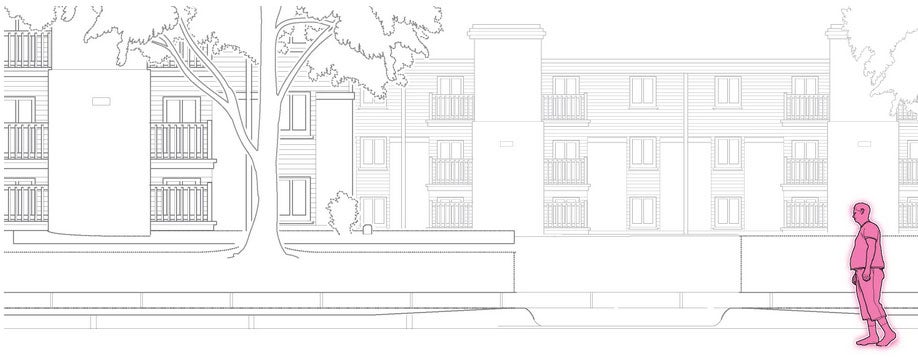Your support helps us to tell the story
From reproductive rights to climate change to Big Tech, The Independent is on the ground when the story is developing. Whether it's investigating the financials of Elon Musk's pro-Trump PAC or producing our latest documentary, 'The A Word', which shines a light on the American women fighting for reproductive rights, we know how important it is to parse out the facts from the messaging.
At such a critical moment in US history, we need reporters on the ground. Your donation allows us to keep sending journalists to speak to both sides of the story.
The Independent is trusted by Americans across the entire political spectrum. And unlike many other quality news outlets, we choose not to lock Americans out of our reporting and analysis with paywalls. We believe quality journalism should be available to everyone, paid for by those who can afford it.
Your support makes all the difference.Last night the city of Ferguson, Missouri descended into chaos following the announcement that the police officer who shot dead the unarmed black teenager Michael Brown will not face indictment.
The decision regarding officer Darren Wilson’s fate was made by a grand jury, which had “every scrap of evidence” presented before it came to a verdict.
Prosecutor Bob McCulloch laid out that evidence when he declared the jury’s decision at 8pm last night – with that press conference almost immediately followed by the start of protests, some violent, around the US.
Nowhere were the displays of anger more potent than in Ferguson itself, where 18-year-old Brown was killed on 9 August this year.
This is the story of what happened that day, starting from 11.45am, according to McCulloch and the evidence heard by the jury. It begins with Wilson, in his SUV, hearing dispatches describing a black male wearing a red hat, khaki shorts and yellow socks and accompanied by another male who had “strong-armed” a nearby shop to steal cigarillos.

Wilson encounters Brown and Johnson
As Wilson drove west on Canfield Drive, he passed Brown and friend Dorian Johnson walking east down the middle of the street.

He tells the pair to get off the road
As Wilson reached the pair, he told them to move to the sidewalk. Words were exchanged, and they continued walking down the middle of the street. As they passed, he noticed that Brown was wearing a red hat and yellow socks and had cigarillos in his hand.

Wilson blocks the street; a 'tussle' ensues
Wilson radioed for support. He backed his vehicle up at an angle, blocking Brown and Johnson’s path as well as blocking car traffic in both directions. Many witnesses reported an altercation — “tussling, wrestling, tug of war” — between Wilson and Brown while Brown was at the car’s window and Wilson was seated inside.

Witnesses say Brown punched Wilson
Witnesses gave conflicting statements on what happened next – some said that Brown punched Wilson, or that Brown was partially inside the car, or that no part of Brown was in the car, or that Wilson fired at Brown from inside the car. Wilson was later found to have redness and swelling on his face.

Wilson's gun fires twice
Two shots were fired inside the car. One bullet struck the door’s arm rest, and one was never found. An injury to Brown’s right thumb was probably caused by one of these because an autopsy found soot in the wound. Brown’s blood and/or DNA was found in the car, on the outside of the driver’s-side door, on the left rear door and on Wilson’s clothing and gun.

Brown runs
Almost all witnesses said Brown hesitated after the shots were fired, then fled east on Canfield.

Wilson chases
Wilson got out of his SUV and chased Brown eastward.

Some witnesses say Wilson fires at Brown
Some witnesses said Wilson began firing as Brown walked or ran away.

Brown stops, turns around
At the corner of Copper Creek and Canfield Brown stopped and turned back toward Wilson, facing west. Wilson stopped as well. Some witnesses said Wilson didn’t fire until Brown turned around.

Brown moves toward Wilson
Brown moved west toward Wilson. Again, witness accounts differed. Some said Brown didn’t move toward Wilson but stood with his hands raised. Several said he didn’t raise his hands, raised them briefly, or held his stomach. Some said he stumbled toward Wilson; others said he moved quickly or “charged.”

Wilson shoots at Brown
Some said Wilson stopped firing when Brown stopped moving towards him and resumed firing when Brown moved toward him again. The sound of shots captured by a person video-chatting in a nearby apartment indicated two sets of shots with a gap in the middle.
Brown dies
Wilson fired several more rounds, killing Brown. Three autopsies agreed that seven or eight bullets hit Brown, all from the front. Three bullets hit while he was either falling or bent at the waist toward Wilson, including what was likely the fatal shot to the top of his head. Brown’s blood was found 25 feet farther east on Canfield than where his body lay, 153 feet from Wilson’s SUV.
(C) Washington Post
For latest coverage of the protests, click here.

Join our commenting forum
Join thought-provoking conversations, follow other Independent readers and see their replies
Comments